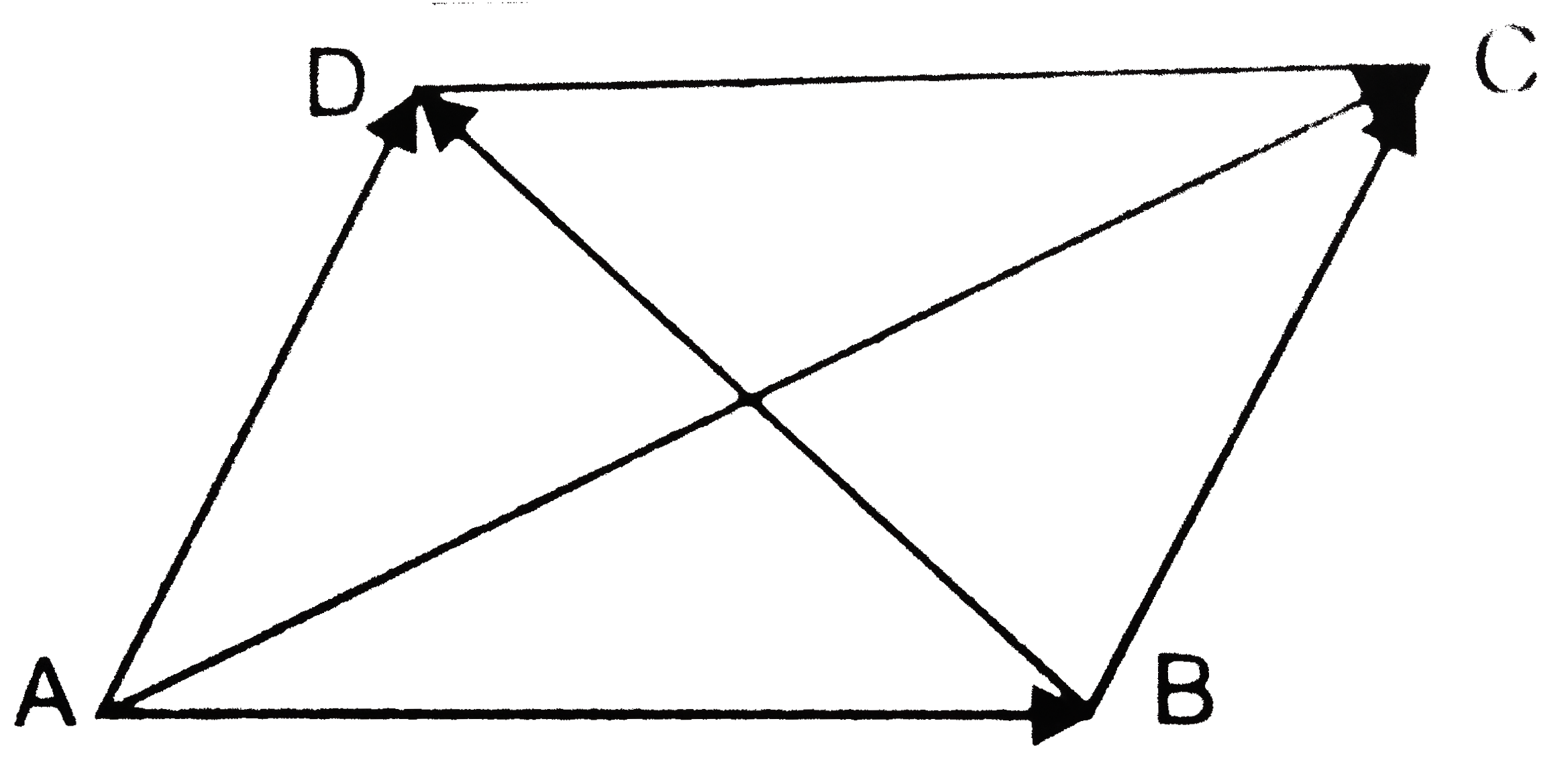A parallelogram ABCD. Prove that −−→AC+−−→BD=2−−→BC'
To prove that →AC+→BD=2→BC in a parallelogram ABCD, we will follow these steps:
Step 1: Define the vectors
In a parallelogram ABCD, we can define the vectors as follows:
- Let →AB=→u
- Let →BC=→v
From the properties of a parallelogram, we know:
- →AD=→u (since opposite sides are equal)
- →DC=→v (since opposite sides are equal)
Step 2: Express →AC and →BD in terms of →u and →v
Using the vector addition:
- →AC=→AB+→BC=→u+→v
- →BD=→BC+→DC=→v+→u=→u+→v
Step 3: Add the vectors →AC and →BD
Now, we can add the two vectors:
→AC+→BD=(→u+→v)+(→u+→v)=2→u+2→v
Step 4: Factor out the common terms
We can factor out the 2:
→AC+→BD=2(→u+→v)
Step 5: Recognize that →u+→v=→BC
Since →BC=→v, we can write:
→AC+→BD=2→BC
Conclusion
Thus, we have proven that:
→AC+→BD=2→BC
In a parallelogram ABCD, we can define the vectors as follows:
- Let →AB=→u
- Let →BC=→v
- →AD=→u (since opposite sides are equal)
- →DC=→v (since opposite sides are equal)
Using the vector addition:
- →AC=→AB+→BC=→u+→v
- →BD=→BC+→DC=→v+→u=→u+→v
Now, we can add the two vectors:
→AC+→BD=(→u+→v)+(→u+→v)=2→u+2→v
We can factor out the 2:
→AC+→BD=2(→u+→v)
Since →BC=→v, we can write:
→AC+→BD=2→BC
Thus, we have proven that:
→AC+→BD=2→BC
Topper's Solved these Questions
- BOOK - ALLENCHAPTER - BASIC MATHEMATICS USED IN PHYSICS &VECTORS EXERCISE - BEGINNER S BOX 12videos
BASIC MATHEMATICS USED IN PHYSICS &VECTORS
- BOOK - ALLENCHAPTER - BASIC MATHEMATICS USED IN PHYSICS &VECTORS EXERCISE - BEGINNER S BOX 23videos
BASIC MATHEMATICS USED IN PHYSICS &VECTORS
- BOOK - ALLENCHAPTER - CENTRE OF MASSEXERCISE - EXERCISE-V B19videos
CENTRE OF MASS
Similar Questions
If E is the intersection point of diagonals of parallelogram ABCD and −−→OA+−−→OB+−−→OC+−−→OD=x−−→OE where O is origin then x=
View SolutionABCD is a parallelogram Fig. 2 (c ) .64. ACand(BD)areitsdiagonals.Showtˆ<br> (a) vec (AC) +vec (BD) =2 vec (BC)<br>(b)vec (AC) - vec (BD) =2 vec (AB)
 . View Solution
. View Solution
Knowledge Check
- Question 1 - Select One
If ABCD is a parallelogram, then −−→AC−−−→BD=
A4−−→ABB3−−→ABC2−−→ABD−−→AB - Question 2 - Select One
E and F are the interior points on the sides BC and CD of a parallelogram ABCD. Let −−→BE=4−−→ECand−−→CF=4−−→FD. If the line EF meets the diagonal AC in G, then −−→AG=λ−−→AC, where λ is equal to :
A13B2125C713D215 - Question 3 - Select One
E and F are the interior points on the sides BC and CD of a parallelogram ABCD. Let −−→BE=4−−→ECand−−→CF=4−−→FD. If the line EF meets the diagonal AC in G, then −−→AG=λ−−→AC, where λ is equal to :
A13B2125C713D215
In the parallelogram ABCD,−−→AC2−−−→BD2=
View SolutionThe diagonals of the parallelogram ABCD intersect at E. If →a,→b,→c and →a be the position vectors of its vertices with respect to an arbitrary origin O, then show that →a+→b+→c+→d=4−−→OE .
View SolutionIn a regular hexagon ABCDEF, prove that −−→AB+−−→AC+−−→AD+−−→AE+−−→AF=3−−→AD
View SolutionIn Fig. ABCDEF is a ragular hexagon. Prove that
−−→AB+−−→AC+−−→AD+−−→AE+−−→AF=6−−→AO.View SolutionABCD is a parallelogram and AC, BD are its diagonals. Show that :
−−→AC+−−→BD=2−−→BC,−−→AC−−−→BD=2−−→AB.View Solution

